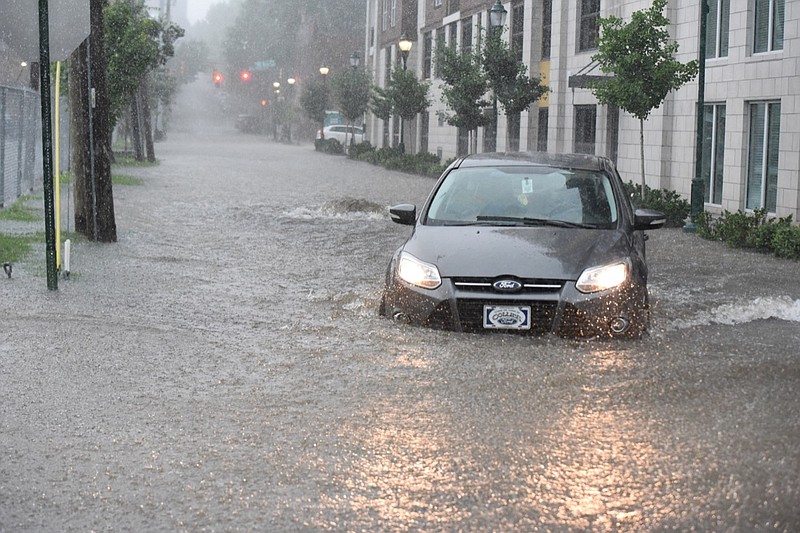January 2018 was extremely dry.
The rest of the year? Anything but.
February brought 200 percent of normal rainfall, and heavy storms sprinkled throughout the rest of the year pushed totals to one of the 11 wettest years in recorded history with almost three weeks to go.
"This is a wet year," WRCB-TV Channel 3 chief meteorologist Paul Barys said. "A very, very wet year."
The Tennessee Valley Authority has recorded rainfall totals for 129 years. With even average rainfall for the final three weeks of the year, 2018 could be one of the five wettest years on record for the Tennessee Valley.
However, it is unlikely to beat the record set in 1973.
"As it stands right now, unless we get a real major flood event, it doesn't look like we'll take the top spot," TVA river forecast center manager James Everett said.
TVA tracks rainfall for a 41,000-square-mile, seven-state area. The average 2018 rainfall across that seven-state area was about 61 inches as of Tuesday morning. The wettest year on record brought 65.1 inches of rain.
WETTEST YEARS ON RECORD
1. 1973 - 65.1 2. 1979 - 64.8 3. 1957 - 64.62 4. 2013 - 63.88 5. 1975 - 63.11 6. 1929 - 62.85 7. 1972 - 62.43 8. 1932 - 62.2 9. 1950 - 61.23 10. 1989 - 60.8 11. 2018 - 60.69 (through 12/10)
With excess rain comes flooding, and the valley saw plenty.
Flood waters pummeled Soddy-Daisy in September, killing a woman and forcing dozens of others from their homes as record rainfall raged through the tri-state area. An 11-year-old boy was rescued from a culvert after being caught in the water. Schoolchildren were sent home early and schools closed the following day.
The flood was caused by the remnants of Hurricane Florence, which pounded the Carolinas. That rain played a significant part in the yearly totals. The mountains of North Carolina saw significant rain totals, with some areas topping out at more than 100 inches.
The average rainfall for Chattanooga was significantly less than those areas but stands at 60.97 inches, almost exactly at the Tennessee Valley average. Current projections show above-normal rainfall the rest of the month, with significant totals along the Gulf Coast, National Weather Service meteorologist Tim Doyle said.
The excess rain has left TVA personnel busy but has been good for ratepayers. The utility company has been able to produce above-normal power due to increased hydroelectric generation. Consistent rain also has allowed for favorable navigation flow rates and increased water supply.
The Tennessee Valley was mostly able to avoid widespread flooding this year. Several severe storms were spread throughout 2018, which allowed TVA personnel to evaluate and recover before the next event. This year served as a shining example of why the utilility company annually lowers the water level through the fall, according to agency officials.
"We are constantly adapting our plan to look at these impacts and do the best thing for all involved: flood control, navigation, water supply, recreation and water quality," Everett said. "When we get a lot of rainfall it makes that balancing act harder. We're constrained by Mother Nature."
Contact staff writer Mark Pace at mpace@timesfreepress.com or 423-757-6659. Follow him on Twitter @themarkpace and on Facebook at ChattanoogaOutdoorsTFP.

